Hyundai Tucson vs Kia EV3 – Kumpi auto on parempi valinta?
Olipa kyse arjesta, perheestä tai pitkistä matkoista – tässä näkyvät erot.
Selvitä, sopiiko Hyundai Tucson vai Kia EV3 paremmin elämäntyyliisi.
A Battle of Two Titans: Hyundai Tucson vs Kia EV3
In the rapidly evolving automotive world, the competition between SUVs has never been fiercer, especially with the advent of innovative electric vehicles. The Hyundai Tucson and Kia EV3 stand out in 2024, each embodying distinct characteristics and technologies that cater to varied consumer needs. This article explores the technical specifications, innovations, and overall performance of both models to help potential buyers make an informed choice.
Exterior Dimensions and Design
The Tucson boasts a length of 4510 mm (and up to 4520 mm), a width of 1865 mm, and a height of 1650 mm, creating an imposing SUV presence. Its bold design language, characterized by sharp lines and an aggressive stance, appeals to modern consumers seeking both style and functionality.
In contrast, the Kia EV3 measures slightly smaller at 4300 mm (and 4310 mm), with a width of 1850 mm and a height that ranges from 1560 to 1570 mm. Despite its more compact stature, the EV3 features a sleek and futuristic design strategy that positions it as a leading player in the electric segment.
Engine Performance and Efficiency
When it comes to engine options, the Hyundai Tucson offers a wide array of choices, including Diesel MHEV, Petrol MHEV, Full Hybrid, and Plugin Hybrid variants, with power outputs ranging from 136 HP to a robust 252 HP. The Tucson's automatic and manual transmission options cater to diverse driving preferences. Fuel consumption varies significantly across the models, with efficiency ratings ranging from 5.1 to 6.8 L/100 km.
On the electric front, the Kia EV3 showcases a powerful electric motor producing up to 204 HP. It employs a reduction gearbox in its automatic transmission, ensuring smooth acceleration. The EV3 is lauded for its efficiency, consuming between 14.9 and 16.2 kWh/100 km. Notably, the electric range is impressive, reaching up to 605 km with the larger battery capacity of 81.4 kWh.
Acceleration and Speed
The Tucson delivers respectable acceleration figures, with the quickest variant reaching 0-100 km/h in just 7.9 seconds. The max speed ranges from 180 to 194 km/h across different engine options, ensuring a thrilling driving experience.
In comparison, the Kia EV3 demonstrates its prowess with a commendable 0-100 km/h time of 7.5 seconds. Though its top speed is lower at 170 km/h, the EV3’s quick acceleration is a testament to the growing capabilities of electric vehicles in terms of performance.
Interior Comfort and Technology
Both SUVs are designed to comfortably seat five passengers, but the Tucson emerges as a leader in cargo capacity, offering up to 620 liters of trunk space – a practical choice for families or travelers. The EV3, while smaller at 460 liters, still provides ample storage for everyday needs.
In terms of technology, both models are equipped with state-of-the-art infotainment systems and advanced safety features. The Tucson’s array of options include a user-friendly touchscreen interface and ADAS (Advanced Driver-Assistance Systems) that enhance driving safety and convenience. The Kia EV3, in line with its innovative ethos, incorporates futuristic features and smart connectivity, appealing to tech-savvy consumers.
Cost-Effectiveness and Environmental Impact
With Hyundai Tucson's diverse engine options, consumers can select a model that fits their budget and needs, making it an attractive all-rounder. The SUV is designed with eco-friendliness in mind, achieving CO2 emissions ranging from 22 to 153 g/km, depending on the variant.
The Kia EV3 takes sustainability a step further, producing zero emissions (0 g/km) and earning an impressive CO2 efficiency class rating of A. While the initial cost of electric vehicles may be higher, the long-term savings on fuel and maintenance can make it a wise investment for environmentally conscious consumers.
Conclusion: Which SUV Reigns Supreme?
Choosing between the Hyundai Tucson and the Kia EV3 ultimately boils down to personal preference and driving needs. The Tucson offers a wealth of versatility with its hybrid options and superior cargo space, making it an excellent choice for families. On the other hand, the Kia EV3 emerges as a front-runner in the electric segment, blending performance with sustainability.
As the automotive industry continues to innovate, both models stand as testaments to their respective brands' commitment to quality, performance, and tech-forward thinking. Whatever your choice, the Tucson and EV3 symbolize a new era of driving that emphasizes efficiency, comfort, and safety.
Tässä mennään yksityiskohtiin: tekniset erot tarkemmin
Kustannukset ja kulutus: Taloudellisuudessa on mielenkiintoisia eroja näiden kahden mallin välillä.
Hyundai Tucson on hinnassa tuskin havaittava edullisempi – sen lähtöhinta on 35700 €, kun taas Kia EV3 maksaa 36000 €. Ero on noin 250 €.
Toimintamatkassa Kia EV3 suoriutuu ratkaiseva paremmin: se yltää jopa 605 km:een, noin 535 km enemmän kuin Hyundai Tucson.
Moottori ja suorituskyky: Teho, vääntömomentti ja kiihtyvyys ovat autoharrastajien klassisia mittareita – ja erot tulevat tässä hyvin esiin.
Moottoritehossa Hyundai Tucson on hieman etulyöntiasemassa – 252 hv verrattuna 204 hv:een. Ero on noin 48 hv hv.
Kiihdytyksessä 0–100 km/h Kia EV3 on vähäinen nopeampi – 7.50 s vs. 7.90 s. Ero on noin 0.40 s sekuntia.
Huippunopeudessa Hyundai Tucson on hieman edellä – se yltää 194 km/h:een, kun taas Kia EV3 saavuttaa 170 km/h. Ero on noin 24 km/h.
Vääntömomentissa näkyy myös ero: Hyundai Tucson vetää erottuva voimakkaammin, 367 Nm verrattuna 283 Nm:een. Eroa on noin 84 Nm.
Tila ja käytännöllisyys: Sisätilat, tavaratila ja kantavuus ratkaisevat auton arjen käytettävyyden. Mukavuus ja joustavuus ovat avainasemassa.
Molemmissa autoissa on tilaa 5 henkilölle.
Omapainossa Hyundai Tucson on jonkin verran kevyempi – 1520 kg verrattuna 1800 kg:een. Painoero on noin 280 kg.
Tavaratilan koossa Hyundai Tucson tarjoaa erottuva enemmän – 620 L verrattuna 460 L:een. Ero on noin 160 L.
Maksimikantavuudessa Hyundai Tucson pärjää selvästi havaittava paremmin – jopa 1799 L, noin 548 L enemmän kuin Kia EV3.
Kantavuudessa Hyundai Tucson on vähän parempi – 545 kg verrattuna 470 kg:een. Ero on noin 75 kg.
Yhteenvetomme: Hyundai Tucson osoittautuu olevan on ylivoimainen ja saa siksi tittelin DriveDuel Champion!
Tässä vertailussa Hyundai Tucson on monipuolisempi kokonaisuus.
Hyundai Tucson
Hyundai Tucson on saanut paljon kiitosta tyylikkäästä muotoilustaan ja tilavasta sisätilastaan, joka tarjoaa mukavuutta perheille ja matkustajille. Sen modernit ominaisuudet ja älykäs teknologia tekevät ajamisesta vaivattomampaa ja turvallisempaa. Tucson yhdistää upeasti käytännöllisyyden ja tyylin, tehden siitä erinomaisen valinnan kaupunkiajoon ja pidemmille matkoille.
Tiedot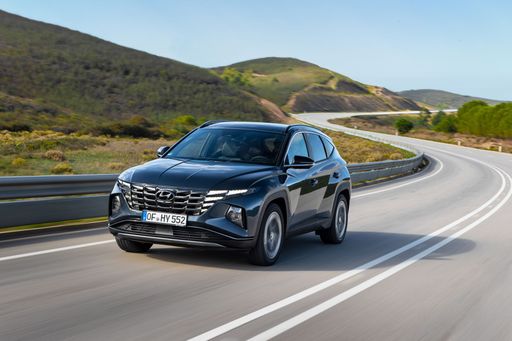 @ hyundai.news
@ hyundai.news
 @ hyundai.news
@ hyundai.news
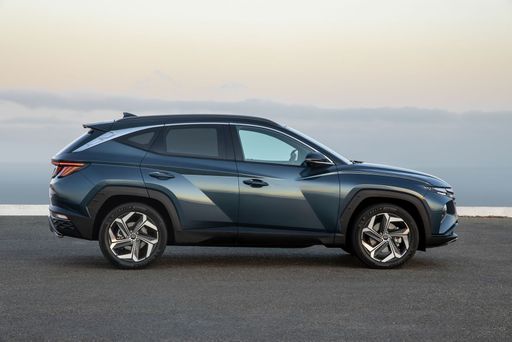 @ hyundai.news
@ hyundai.news
 @ hyundai.news
@ hyundai.news
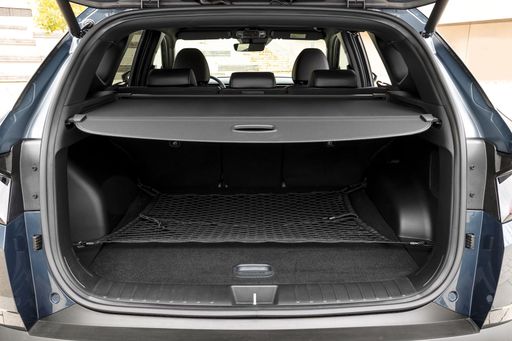 @ hyundai.news
@ hyundai.news
Kia EV3
EV3 on innovatiivinen sähköauto, joka yhdistää modernin designin ja ympäristöystävällisen liikkuvuuden. Sen sujuva ajettavuus ja hiljainen käynti tekevät siitä miellyttävän valinnan kaupunkiajossa. Lisäksi EV3:n tilava ja hyvin varusteltu sisustus tarjoaa mukavuutta niin päivittäisille matkoille kuin pidemmillekin reissuille.
Tiedot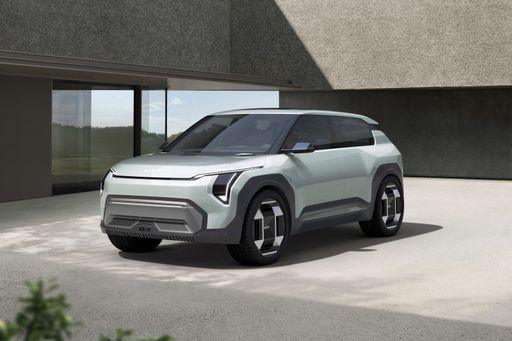 @ kiamedia.com
@ kiamedia.com
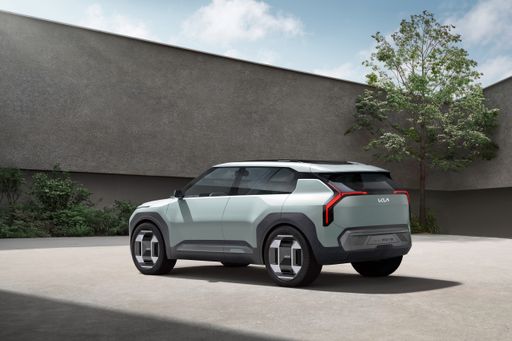 @ kiamedia.com
@ kiamedia.com
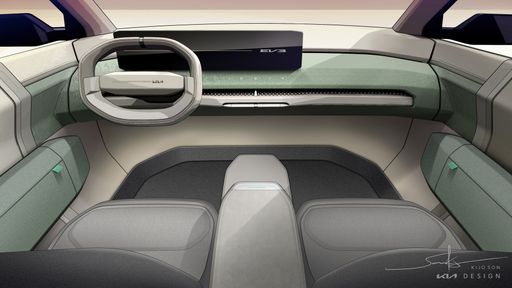 @ kiamedia.com
@ kiamedia.com

|

|
|
|
|
Kustannukset ja kulutus |
|
|---|---|
|
Hinta
35700 - 54100 €
|
Hinta
36000 - 48700 €
|
|
Kulutus L/100km
1 - 6.9 L
|
Kulutus L/100km
-
|
|
Kulutus kWh/100km
-
|
Kulutus kWh/100km
14.9 - 16.2 kWh
|
|
Sähköinen toimintasäde
64 - 70 km
|
Sähköinen toimintasäde
436 - 605 km
|
|
Akun kapasiteetti
-
|
Akun kapasiteetti
58.3 - 81.4 kWh
|
|
CO2
22 - 156 g/km
|
CO2
0 g/km
|
|
Polttoainesäiliön tilavuus
42 - 54 L
|
Polttoainesäiliön tilavuus
-
|
Mitat ja kori |
|
|---|---|
|
Kori
SUV
|
Kori
SUV
|
|
Istuimet
5
|
Istuimet
5
|
|
Ovet
5
|
Ovet
5
|
|
Omamassa
1520 - 1889 kg
|
Omamassa
1800 - 1885 kg
|
|
Tavaratila
546 - 620 L
|
Tavaratila
460 L
|
|
Pituus
4510 - 4520 mm
|
Pituus
4300 - 4310 mm
|
|
Leveys
1865 mm
|
Leveys
1850 mm
|
|
Korkeus
1650 mm
|
Korkeus
1560 - 1570 mm
|
|
Maksimi tavaratila
1721 - 1799 L
|
Maksimi tavaratila
1251 L
|
|
Kantavuus
525 - 545 kg
|
Kantavuus
470 kg
|
Moottori ja suorituskyky |
|
|---|---|
|
Moottorityyppi
Diesel MHEV, Bensiini MHEV, Bensiini, Täyshybridi, Plug-in hybridi
|
Moottorityyppi
Sähkö
|
|
Vaihteisto
Automaatti, Manuel
|
Vaihteisto
Automaatti
|
|
Vaihteiston tyyppi
Kaksoiskytkin automaatti, Manuaalivaihteisto, Automaattivaihteisto
|
Vaihteiston tyyppi
Alennusvaihteisto
|
|
Vetotapa
Etuveto, Neliveto
|
Vetotapa
Etuveto
|
|
Teho hv
136 - 252 hv
|
Teho hv
204 hv
|
|
Kiihtyvyys 0-100 km/h
7.9 - 11.6 s
|
Kiihtyvyys 0-100 km/h
7.5 - 7.9 s
|
|
Huippunopeus
180 - 194 km/h
|
Huippunopeus
170 km/h
|
|
Vääntömomentti
265 - 367 Nm
|
Vääntömomentti
283 Nm
|
|
Sylinterien lukumäärä
4
|
Sylinterien lukumäärä
-
|
|
Teho kW
100 - 185 kW
|
Teho kW
150 kW
|
|
Iskutilavuus
1598 cm3
|
Iskutilavuus
-
|
Yleiset |
|
|---|---|
|
Mallivuosi
2024
|
Mallivuosi
2024
|
|
CO2-tehokkuusluokka
E, F, D, B
|
CO2-tehokkuusluokka
A
|
|
Merkki
Hyundai
|
Merkki
Kia
|
Millaisia voimalinjoja Hyundai Tucson:ssa on saatavilla?
Saatavilla olevat vaihtoehdot: Etuveto tai Neliveto.
Näytetyt hinnat ja tiedot ovat arvioita, jotka perustuvat Saksan listahintoihin, ja voivat vaihdella maittain. Nämä tiedot eivät ole oikeudellisesti sitovia.
